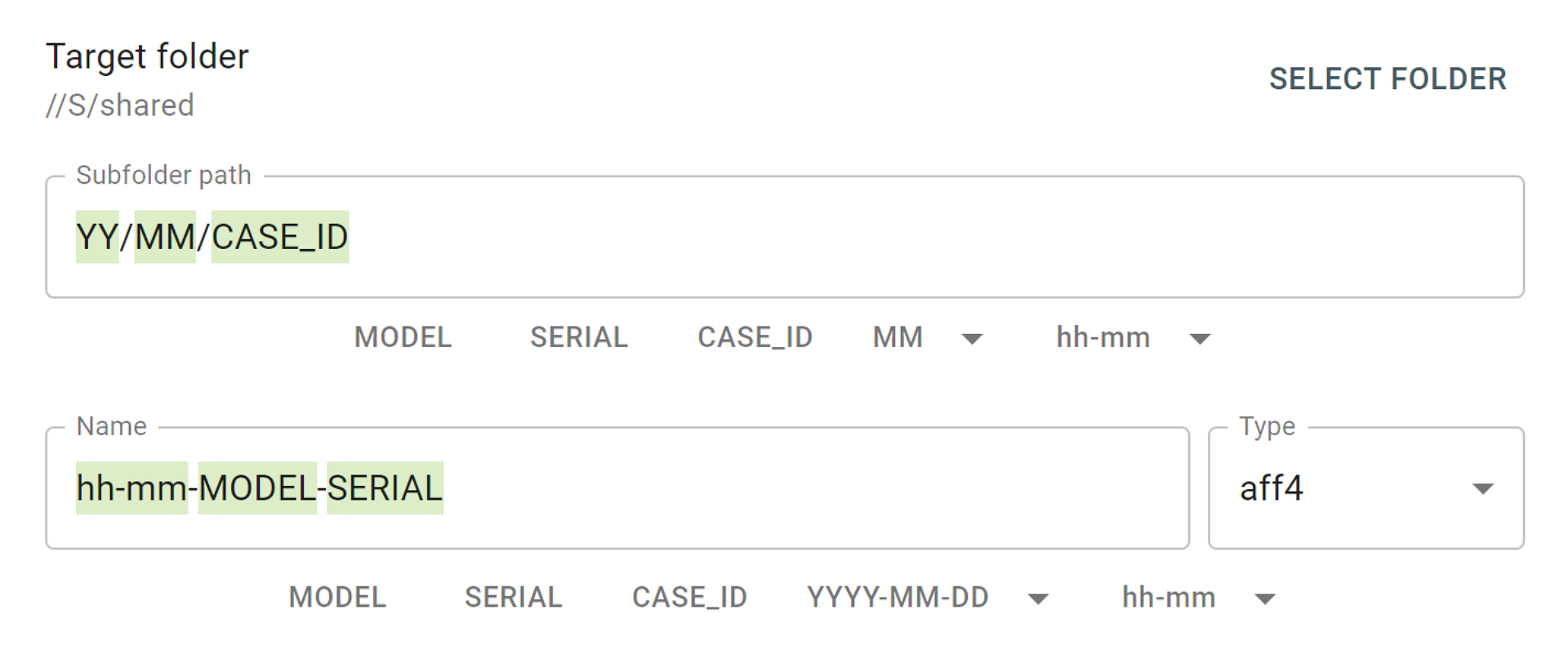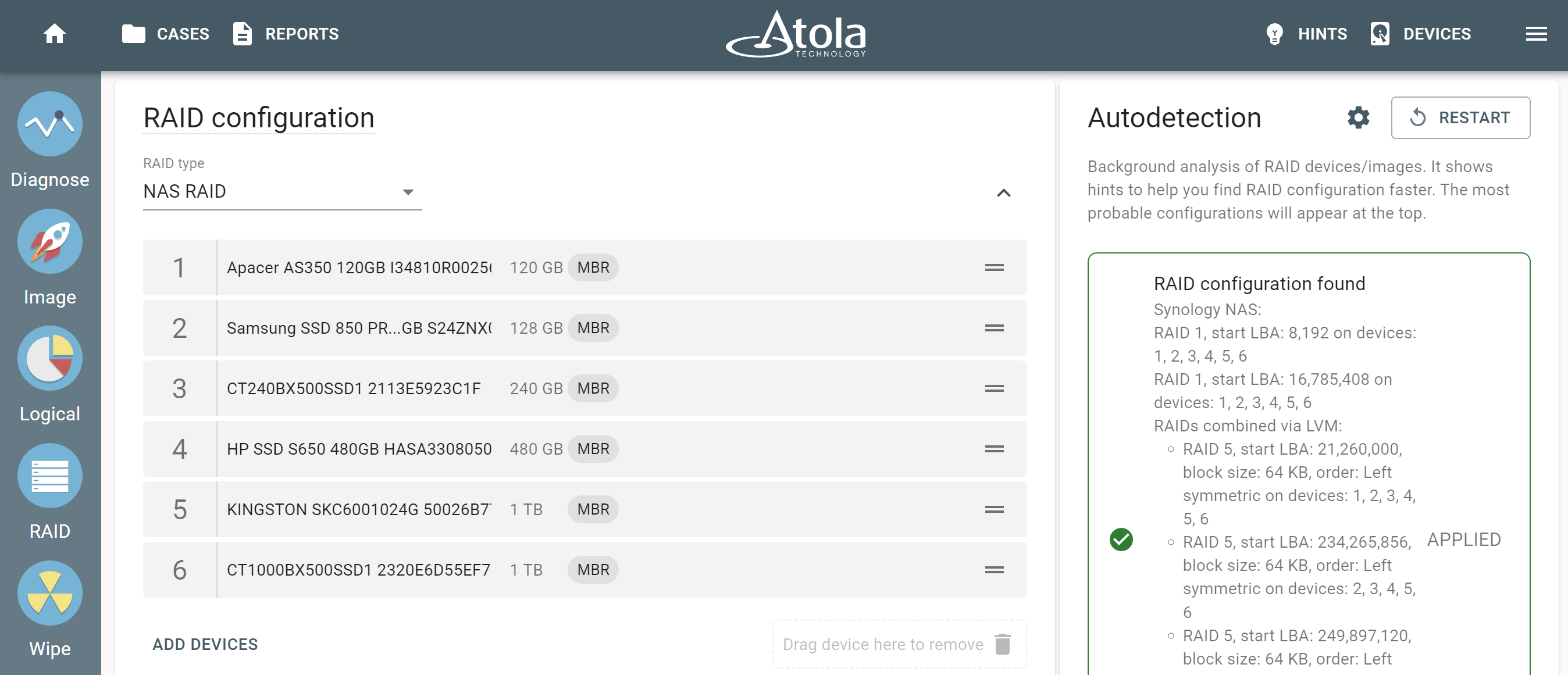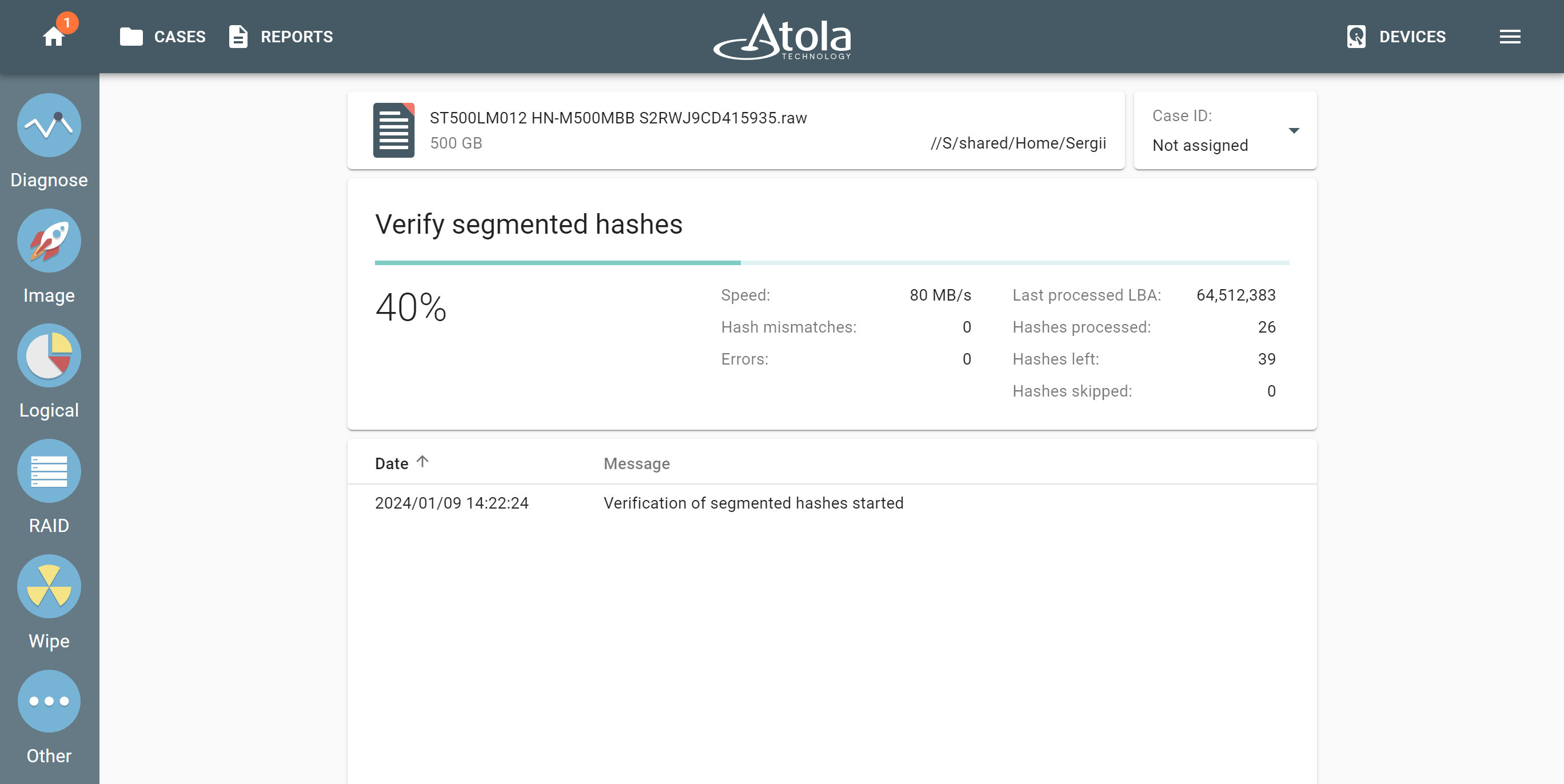Atola TaskForce is designed to be the fastest forensic imager. It allows imaging multiple drives simultaneously at the overall speed of 15 TB/hour. The individual imaging sessions run at the top native speeds of most drives.
To test TaskForce imaging speed, we used various models of SSD, HDD & USB devices and compared the performance achieved with the read speed in sequential mode (sectors read and written to in linear order) at userbenchmark.com.
NB Imaging speed is limited by the speed of the slowest of the devices, participating in the imaging session. Therefore, the slowest of the two speeds (either the read speed of the source or the write speed of the target) will define the speed at which the imaging process is running.
#1. WDC WD 100EFAX-68LHPNO 10TB
Let’s begin our first imaging session with WDC WD 100EFAX-68LHPNO. We are going to use this HDD as the source and choose the appropriate target to check TaskForce imaging speed.
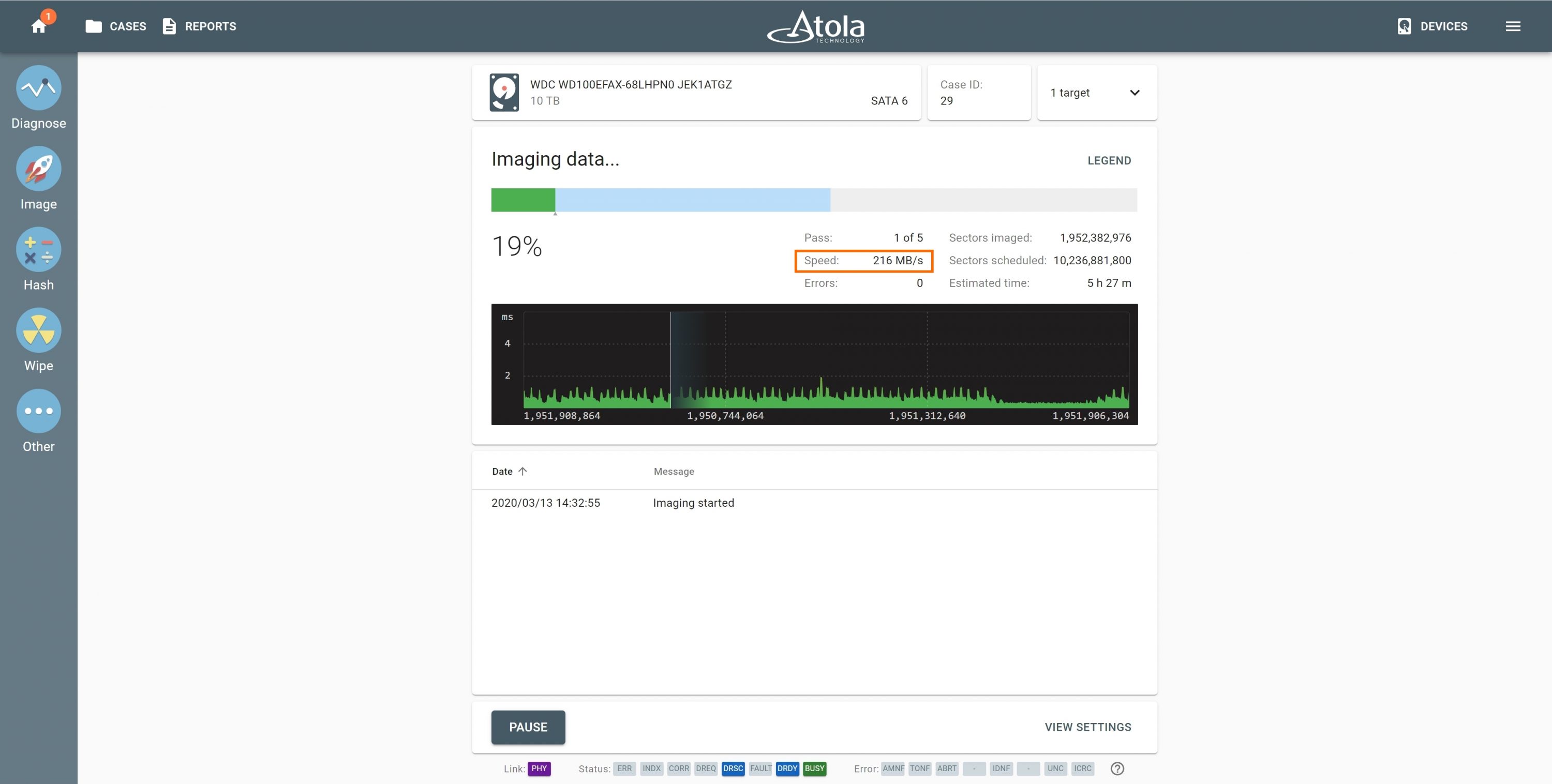
The TaskForce managed to develop an excellent imaging speed of 216 MB/s when imaging the drive.
According to userbenchmark.com, WDC WD 100EFAX-68LHPNO maximum read speed in sequential mode is 203 MB/s.

#2. Kingston DT HyperX USB 3.0 64 GB
The second device we are going to image is a Kingston USB flash stick. This device is pretty much worn out and thus perfect for showing a clear example of how a dated USB will perform during imaging.
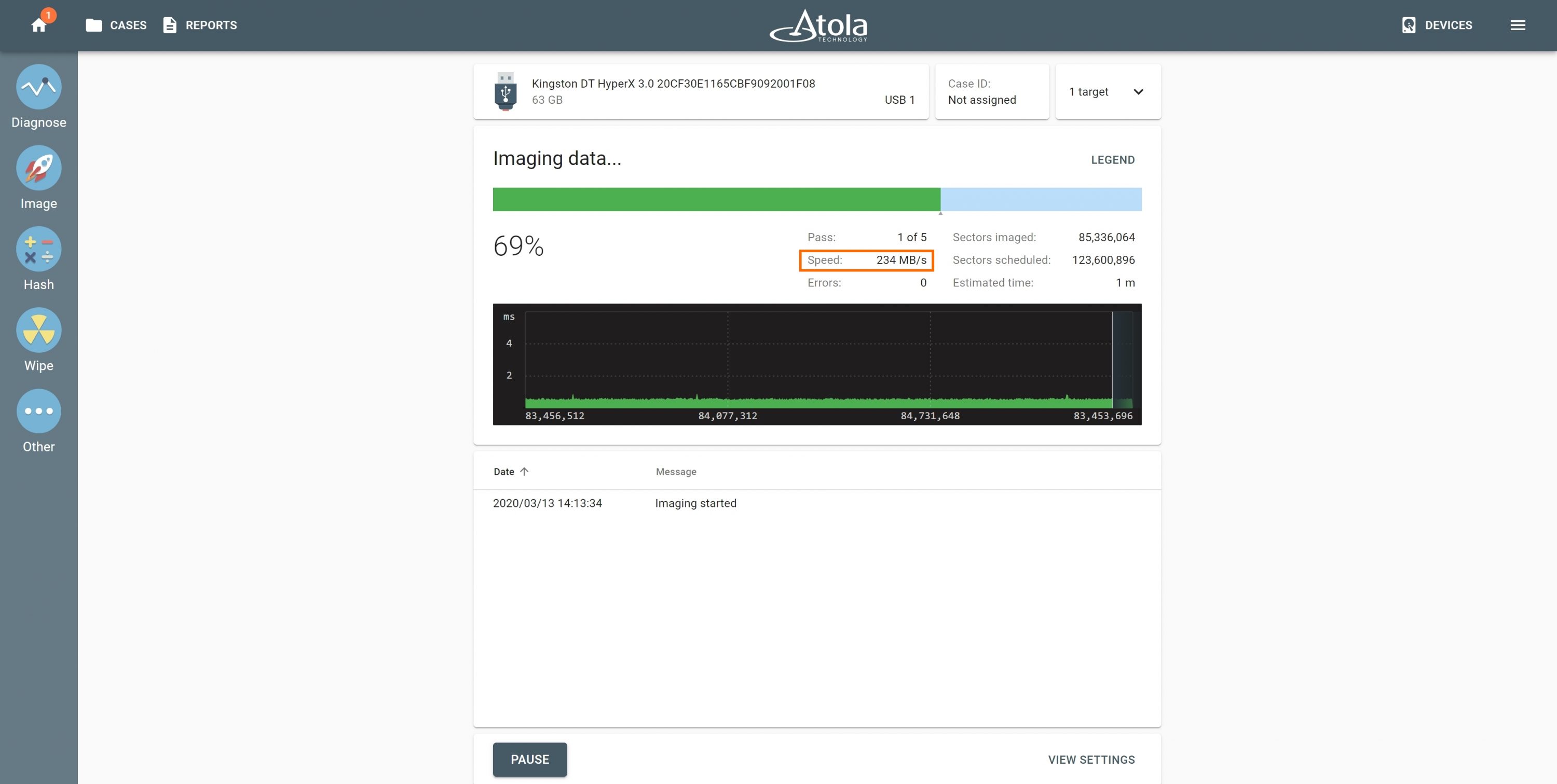
The USB device gained a good read speed of 234 MB/s. According to userbenchmark.com, this drive’s maximum read speed in sequential mode is 278 MB/s

#3. Samsung 860 Pro 256GB
Let’s take a popular SSD model Samsung 860 Pro 256GB as the source and an identical target to see how TaskForce will handle the imaging of this device type. This time, we are going to pay attention to the write speed in sequential mode at userbenchmark.com, as this speed will be slower and determine the speed of the session. These devices are continuously used by our QA team for various types of tests, which is why they are past their prime.
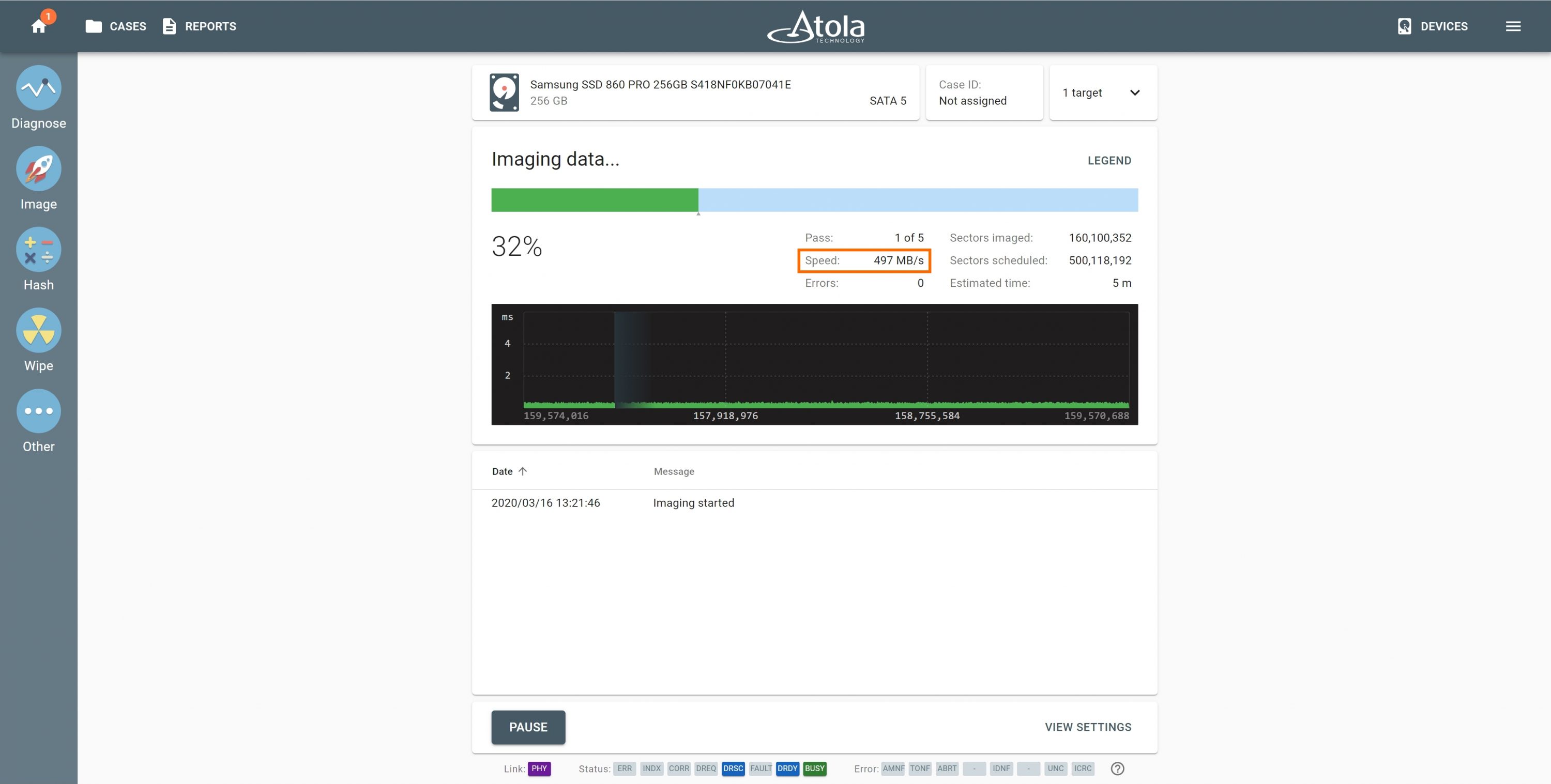
Nevertheless, TaskForce managed to image Samsung 860 Pro 256GB source at 497 MB/s, having exceeded the maximum write speed for this SSD type at userbenchmark.com which constitutes 491 MB/s.

#4. Seagate ST1000NM0001 1TB
The next HDD we are going to use is Seagate ST1000NM0001 1TB. We have two identical devices to use as a source and a target. Therefore, we will again focus on the achieved write speed to compare it to the one at userbenchmark.com.
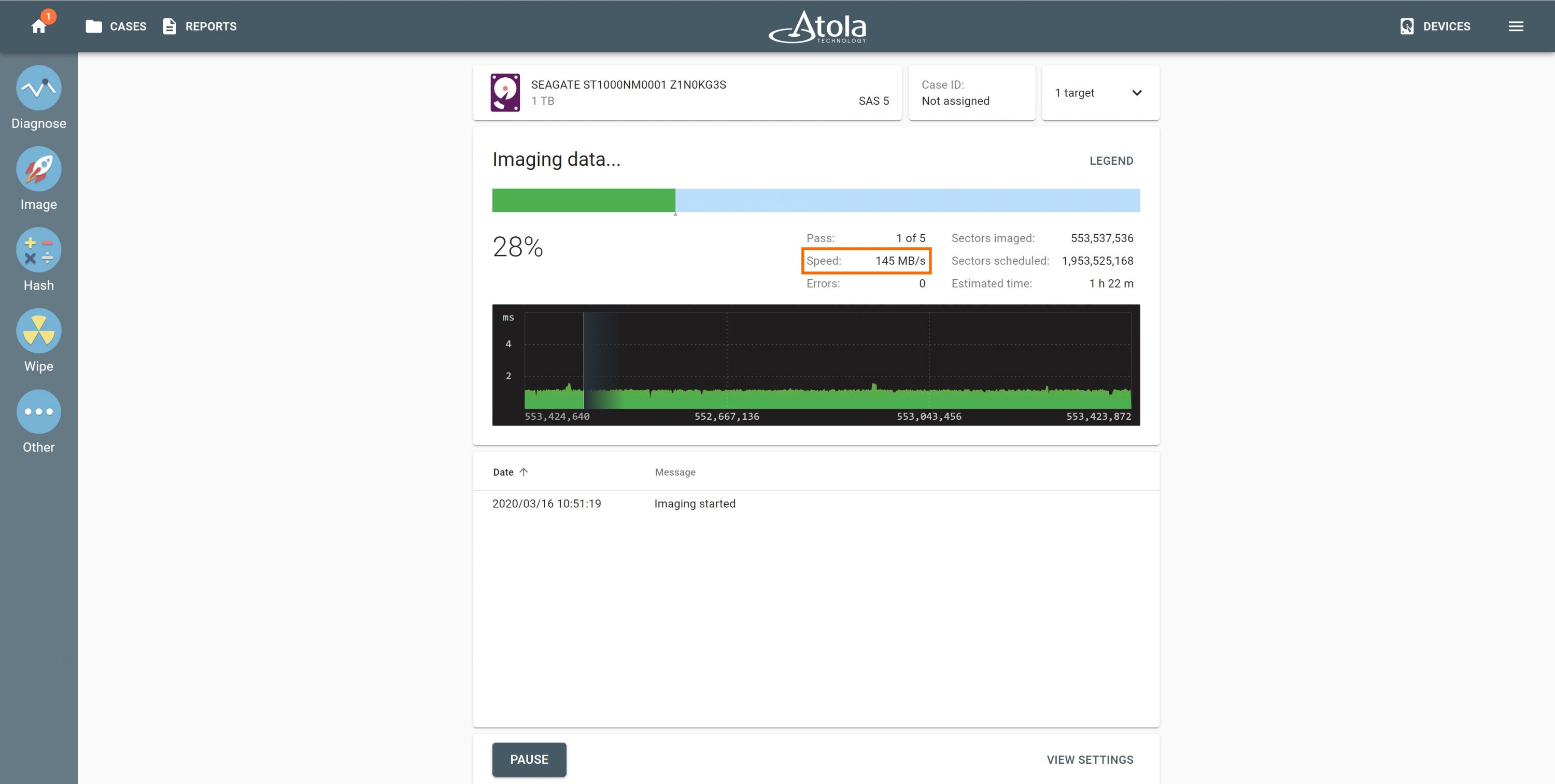
TaskForce managed to copy data from Seagate HDD at 145 MB/s, matching the max write speed 145 MB/s at userbenchmark.com.

#5. Corsair Voyager GS 63GB
This USB device is a fast Corsair USB drive and it has been one of the frequently used cards by Atola QA team the past couple of years, which means that its condition is far from perfect.
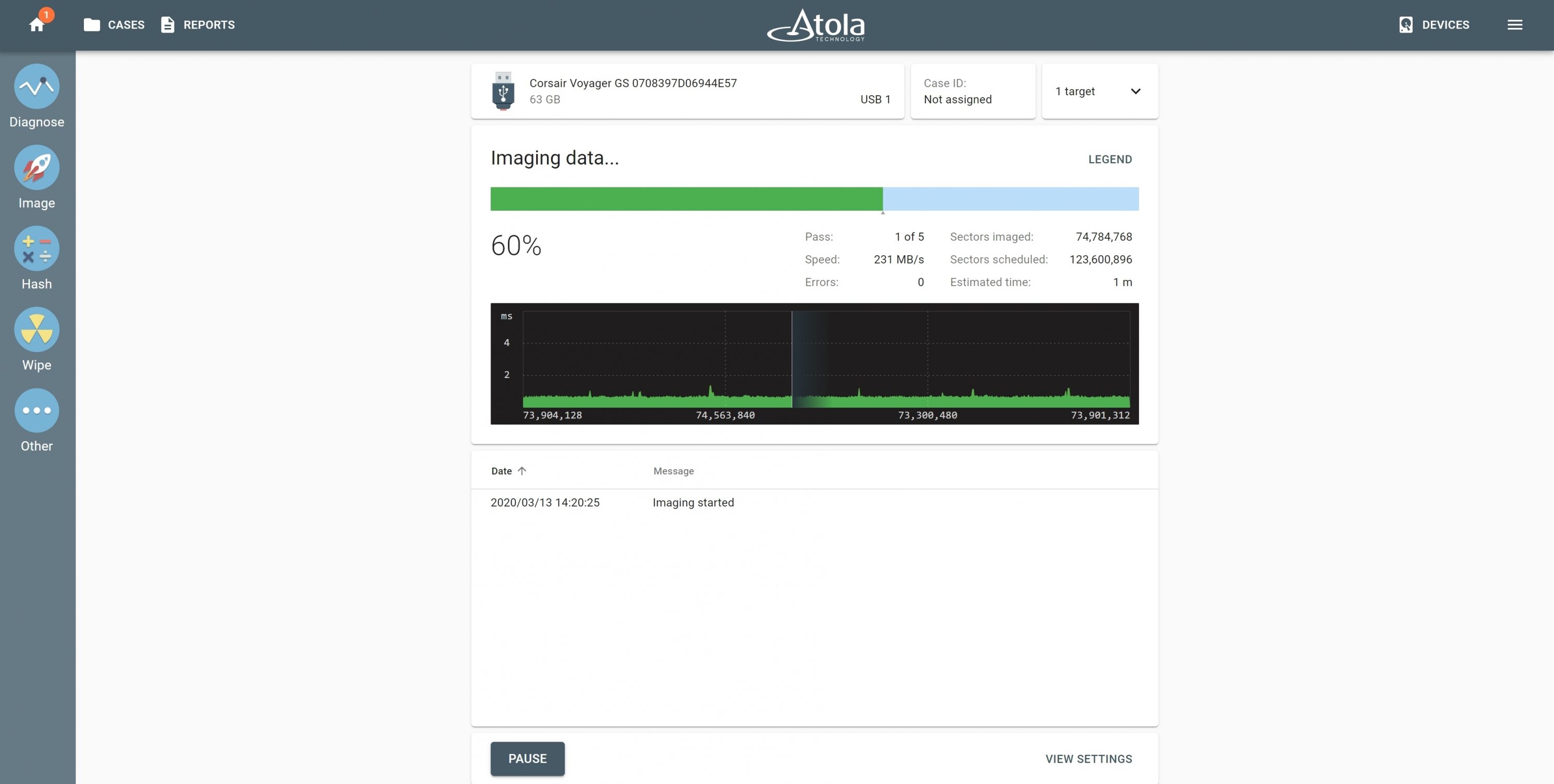
TaskForce managed to develop good imaging speed 231 MB/s. While it did not get really close to the max read speed for this very device at userbenchmark.com, which is 283 MB/s, it does the significantly exceed the average of 151 MB/s.

#6. SanDisk SDSSDA 120GB
Let us take SanDisk SDSSDA 120GB. This SSD is still in good condition, even though it is constantly used by Atola QA team for testing purposes.
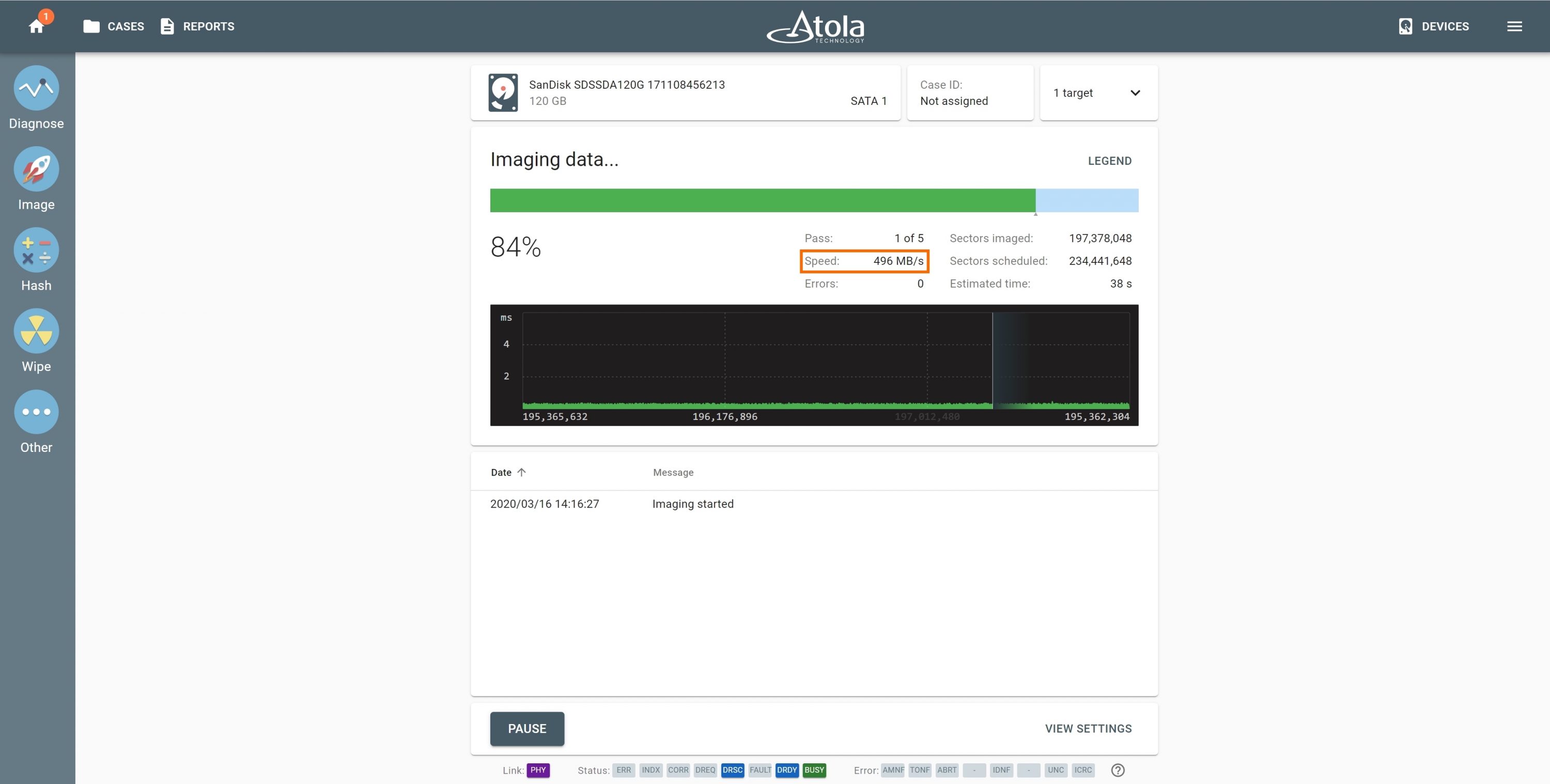
TaskForce succeeded in imaging data from SanDisk SDSSDA 120GB at an excellent speed 496 MB/s, slightly exceeding the maximum read speed at userbenchmark.com for this very device, which is 494 MB/s.

NB Please note that the imaging process can be considerably slower when it comes to working with damaged drives. The speed heavily depends on the type and degree of such damage.
Imagine all these imaging sessions running simultaneously, each individual process at its top speed! TaskForce’s server-grade hardware supports up to 18 imaging sessions at a time. And as long as you stay within the whooping 15 TB/hour overall capacity, none of the sessions will experience any penalty on its speed.
For more information, check out this page about TaskForce multitasking and performance.
- RAID imaging made easy with TaskForce - May 3, 2022
- Image. Anything. Fast.What makes TaskForce the ultimate forensic imager - February 9, 2022
- RAID configuration detection in Atola TaskForce - April 7, 2021
